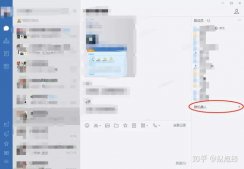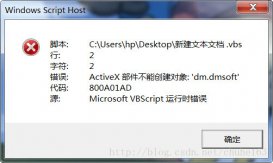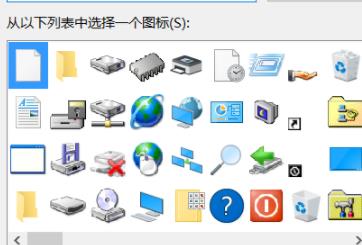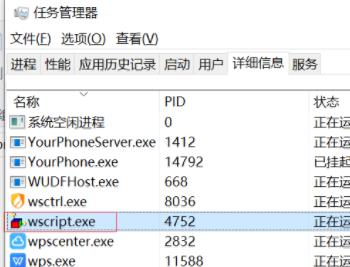dim oExcel,oWb,oSheet
Set oExcel= CreateObject("Excel.Application")
Set oWb = oExcel.Workbooks.Open("E:\其他\新装电话表.xls")
Set oSheet = oWb.Sheets("Sheet1")
MsgBox oSheet.Range("B2").Value '#提取单元格B2内容
'.....
3、如果是XP系统,可以使用如下代码
Dim objFileDlg
Set objFileDlg = CreateObject("UserAccounts.CommonDialog")
objFileDlg.Filter = "Excel File (*.xls) |*.xls"
If objFileDlg.ShowOpen Then
msgbox "您选择的文件是:" & objFileDlg.FileName & vbCrLf
End If
VBS控制Excel的一些常见方法:
(一) 使用动态创建的方法
首先创建 Excel 对象,使用ComObj:
oExcel = CreateObject( "Excel.Application" )
1) 显示当前窗口:
oExcel.Visible = True
2) 更改 Excel 标题栏:
oExcel.Caption = "应用程序调用 Microsoft Excel"
3) 添加新工作簿:
oExcel.WorkBooks.Add
4) 打开已存在的工作簿:
oExcel.WorkBooks.Open( "C:\Excel\Demo.xls" )
5) 设置第2个工作表为活动工作表:
oExcel.WorkSheets(2).Activate
或
oExcel.WorksSheets( "Sheet2" ).Activate
6) 给单元格赋值:
oExcel.Cells(1,4).Value = "第一行第四列"
7) 设置指定列的宽度(单位:字符个数),以第一列为例:
oExcel.ActiveSheet.Columns(1).ColumnsWidth = 5
8) 设置指定行的高度(单位:磅)(1磅=0.035厘米),以第二行为例:
oExcel.ActiveSheet.Rows(2).RowHeight = 1/0.035 ' 1厘米
9) 在第8行之前插入分页符:
oExcel.WorkSheets(1).Rows(8).PageBreak = 1
10) 在第8列之前删除分页符:
oExcel.ActiveSheet.Columns(4).PageBreak = 0
11) 指定边框线宽度:
oExcel.ActiveSheet.Range( "B3:D4" ).Borders(2).Weight = 3
1-左 2-右 3-顶 4-底 5-斜( \ ) 6-斜( / )
12) 清除第一行第四列单元格公式:
oExcel.ActiveSheet.Cells(1,4).ClearContents
13) 设置第一行字体属性:
oExcel.ActiveSheet.Rows(1).Font.Name = "隶书"
oExcel.ActiveSheet.Rows(1).Font.Color = clBlue
oExcel.ActiveSheet.Rows(1).Font.Bold = True
oExcel.ActiveSheet.Rows(1).Font.UnderLine = True
14) 进行页面设置:
a.页眉:
oExcel.ActiveSheet.PageSetup.CenterHeader = "报表演示"
b.页脚:
oExcel.ActiveSheet.PageSetup.CenterFooter = "第&P页"
c.页眉到顶端边距2cm:
oExcel.ActiveSheet.PageSetup.HeaderMargin = 2/0.035
d.页脚到底端边距3cm:
oExcel.ActiveSheet.PageSetup.HeaderMargin = 3/0.035
e.顶边距2cm:
oExcel.ActiveSheet.PageSetup.TopMargin = 2/0.035
f.底边距2cm:
oExcel.ActiveSheet.PageSetup.BottomMargin = 2/0.035
g.左边距2cm:
oExcel.ActiveSheet.PageSetup.LeftMargin = 2/0.035
h.右边距2cm:
oExcel.ActiveSheet.PageSetup.RightMargin = 2/0.035
i.页面水平居中:
oExcel.ActiveSheet.PageSetup.CenterHorizontally = 2/0.035
j.页面垂直居中:
oExcel.ActiveSheet.PageSetup.CenterVertically = 2/0.035
k.打印单元格网线:
oExcel.ActiveSheet.PageSetup.PrintGridLines = True
15) 拷贝操作:
a.拷贝整个工作表:
oExcel.ActiveSheet.Used.Range.Copy
b.拷贝指定区域:
oExcel.ActiveSheet.Range( "A1:E2" ).Copy
c.从A1位置开始粘贴:
oExcel.ActiveSheet.Range.( "A1" ).PasteSpecial
d.从文件尾部开始粘贴:
oExcel.ActiveSheet.Range.PasteSpecial
16) 插入一行或一列:
a. oExcel.ActiveSheet.Rows(2).Insert
b. oExcel.ActiveSheet.Columns(1).Insert
17) 删除一行或一列:
a. oExcel.ActiveSheet.Rows(2).Delete
b. oExcel.ActiveSheet.Columns(1).Delete
18) 打印预览工作表:
oExcel.ActiveSheet.PrintPreview
19) 打印输出工作表:
oExcel.ActiveSheet.PrintOut
20) 工作表保存:
if not oExcel.ActiveWorkBook.Saved then
oExcel.ActiveSheet.PrintPreview
21) 工作表另存为:
oExcel.SaveAs( "C:\Excel\Demo1.xls" )
22) 放弃存盘:
oExcel.ActiveWorkBook.Saved = True
23) 关闭工作簿:
oExcel.WorkBooks.Close
24) 退出 Excel:
oExcel.Quit
(二) 使用VBS 控制Excle二维图
1)选择当第一个工作薄第一个工作表
set oSheet=oExcel.Workbooks(1).Worksheets(1)
2)增加一个二维图
achart=oSheet.chartobjects.add(100,100,200,200)
3)选择二维图的形态
achart.chart.charttype=4
4)给二维图赋值
set series=achart.chart.seriescollection
range="sheet1!r2c3:r3c9"
series.add range,true
5)加上二维图的标题
achart.Chart.HasTitle=True
achart.Chart.ChartTitle.Characters.Text=" Excle二维图"
6)改变二维图的标题字体大小
achart.Chart.ChartTitle.Font.size=18
7)给二维图加下标说明
achart.Chart.Axes(xlCategory, xlPrimary).HasTitle = True
achart.Chart.Axes(xlCategory, xlPrimary).AxisTitle.Characters.Text = "下标说明"
8)给二维图加左标说明
achart.Chart.Axes(xlValue, xlPrimary).HasTitle = True
achart.Chart.Axes(xlValue, xlPrimary).AxisTitle.Characters.Text = "左标说明"
9)给二维图加右标说明
achart.Chart.Axes(xlValue, xlSecondary).HasTitle = True
achart.Chart.Axes(xlValue, xlSecondary).AxisTitle.Characters.Text = "右标说明"
10)改变二维图的显示区大小
achart.Chart.PlotArea.Left = 5
achart.Chart.PlotArea.Width = 223
achart.Chart.PlotArea.Height = 108
如何用vbs把excel的单元格数据写到txt
If WScript.Arguments.Count > 0 Then Filename = WScript.Arguments(0)
Set a = CreateObject("Excel.Application")
If Filename = "" Then
Filename = a.GetOpenFilename("Excel Files (*.xls), *.xls")
If VarType(Filename) = vbBoolean Then
MsgBox "Excel2Txt用于将Excel文件的每个Sheet保存为一个文本文件。" & vbCr & vbLf & vbCr & vbLf & "用法: Excel2Txt filename.xls 或在对话框中打开Excel文件。"
WScript.Quit
End If
End If
Set w = a.Workbooks.Open(Filename)
n = Replace(Replace(w.Name, ".xls", ""), ".XLS", "")
a.DisplayAlerts = False
For Each s In w.Sheets
s.SaveAs w.Path & "\" & n & "_" & s.Name & ".txt", 20
Next
a.Quit
把以上代码存为Excel2Txt.vbs双击执行就行了
VBS操作Excel
Set objExcel = CreateObject("Excel.Application") '建一个exel对象
Set objWorkbook = objExcel.Workbooks.Open _
("E:\DOC\Hewl\领域模型.xls") '打开文件
strToBeWrited = "-----------------------------------" & vbcrlf & _
"-- Generated by ScriptGenerator ---" & vbcrlf & _
"-----------------------------------" & vbcrlf & vbcrlf
Count = objWorkbook.WorkSheets.Count '取sheet数量
Set my = CreateObject("Excel.Sheet") '新建sheet对象
For Each my In objWorkbook.WorkSheets '遍历sheet
If my.Name = "目录" or my.Name = "SecondHandHouse" Then
'do nothing
Else
'Wscript.Echo my.Name '获得sheet名字
'Wscript.Echo my.Rows.Count
'strToBeWrited = strToBeWrited & "create table " & my.Name & vbcrlf
strToBeWrited = strToBeWrited & "/*==============================================================*/" & vbcrlf
strToBeWrited = strToBeWrited & "/* Table: " & my.Name & " */" & vbcrlf
strToBeWrited = strToBeWrited & "/*==============================================================*/" & vbcrlf
strToBeWrited = strToBeWrited & "create table " & my.Name & " (" & vbcrlf
rowNum = 3
Do Until my.Cells(rowNum,1).Value = ""
'Wscript.Echo "sAMAccountName: " & my.Cells(rowNum, 2).Value
strToBeWrited = strToBeWrited & " " & my.Cells(rowNum,2).Value & " " & my.Cells(rowNum,3).Value & " not null"
If not my.Cells(rowNum,9).Value = "" Then
strToBeWrited = strToBeWrited & " default " & my.Cells(rowNum,9).Value
End If
strToBeWrited = strToBeWrited & "," & vbcrlf
rowNum = rowNum + 1
Loop
strToBeWrited = strToBeWrited & " constraint PK_" & my.Name & " primary key (id)" & vbcrlf
strToBeWrited = strToBeWrited & ")" & vbcrlf
End If
strToBeWrited = strToBeWrited & vbcrlf
Next
For Each my In objWorkbook.WorkSheets '遍历sheet
If my.Name = "目录" or my.Name = "SecondHandHouse" Then
'do nothing
Else
strToBeWrited = strToBeWrited & " constraint PK_" & my.Name & " primary key (id)" & vbcrlf
strToBeWrited = strToBeWrited & ")" & vbcrlf
End If
strToBeWrited = strToBeWrited & vbcrlf
Next
'写文件
set fs =createobject("scripting.filesystemobject")
set f = fs.opentextfile("E:\DOC\Hewl\dbscript.sql",2, true)
'Wscript.Echo strToBeWrited
f.write strToBeWrited
f.close
Set f = nothing
Set fs = nothing
objExcel.Quit '结束退出
Dim Excel
Set Excel = CreateObject("Excel.Application")
'不显示提示信息,这样保存的时候就不会提示是否要覆盖原文件
Excel.DisplayAlerts=FALSE
'调用EXCEL文件的时候不显示
Excel.visible=FALSE
Excel.workbooks.open("D:\test.XLS")
'将sheet1设置为活动sheet
Excel.workbooks(1).activate
'插入行,这条我找MSDN都没找到,最后乱试试出来的
Excel.ActiveSheet.rows(1).insert
Excel.ActiveSheet.Cells(1,1).Value = Date
Excel.ActiveSheet.Cells(1,2).Value = "row1"
Excel.ActiveSheet.Cells(1,3).Value = "comment1"
Excel.ActiveSheet.rows(2).insert
Excel.ActiveSheet.Cells(2,1).Value = Date
Excel.ActiveSheet.Cells(2,4).Value = "row2"
Excel.ActiveSheet.Cells(2,7).Value = "comment2"
Excel.save
Excel.quit
Set Excel = Nothing
Excel.ActiveSheet.rows(1).insert
不用找MSDN,在EXCEL帮助中就能找到,看“编程信息”/“Microsoft Excel Visual Basic 参考”/“属性”/“Q-R”/“Rows 属性”的介绍,和“编程信息”/“Microsoft Excel Visual Basic 参考”/“方法”/“I-L”/“Insert 方法”的介绍,就能明白这条语句的语法。
因为在EXCEL的VBA中,“Rows”、“Columns”、“Cells”属性返回的都是Range对象,所以对它们的应用可以等同Range对象的应用。
例如:你在EXCEL的VBA编辑器中可以这样写
cells(1,1).value="abc"
cells(1,1).wraptext=false
在写这些语句时,你应该注意到,在写完“cells(1,1).”之后,并没有弹出应该弹出的属性/方法列表,但是这些语句确实可以正常运行。
我的方法是:在EXCEL中录制宏,然后在EXCEL的VBA编辑器中修改语句,调试运行无误后再粘贴到VBS语句中,进行适当的修改。






